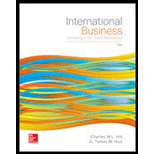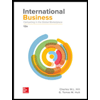
Case summary:
The Country B has exposed to high inflation rate for many years. This has resulted in a decline in the value of Country B’s currency against the dollar of Country U. Later, the government of country B has bought down the annual inflation rates into single digits. As a result, the Country B’s economy has progressed tremendously due to the lower inflation rate policies. This in turn has resulted in a steady appreciation of Country B’s currency against the dollar of Country U.
The appreciation in the value of Country B’s currency has benefited Company E (manufacturer of regional jets). Later, the Company E has deal with impact of currency appreciation on its revenue and decided to hedge against the future appreciation of Country B’s currency through purchasing forward contracts. Suddenly, the Company E has incurred a loss of $121 million during the financial crisis period.
Characters in the case:
- Company E
To discuss: Whether the Company E’s decision to attempt and hedge against appreciation of Country B’s currency was a good decisions and its alternative.
Want to see the full answer?
Check out a sample textbook solution
Chapter 10 Solutions
International Business: Competing in the Global Marketplace
- Southern Fried Chicken bought equipment on January 2, 2025, for $21,000. The equipment was expected to remain in service for four years and to operate for 4,500 hours. At the end of the equipment's useful life, Southern Fried Chicken estimates that its residual value will be $3,000. The equipment operated for 450 hours the first year, 1,350 hours the second year, 1,800 hours the third year, and 900 hours the fourth year. Read the requirements. Requirement 1. Prepare a schedule of depreciation expense, accumulated depreciation, and book value per year for the equipment under the three depreciation methods: straight-line, units-of-production, and double-declining-balance. Show your computations. Note: Three depreciation schedules must be prepared. Begin by preparing a depreciation schedule using the straight-line method. Straight-Line Depreciation Schedule Date Asset Cost Depreciable Cost for the Year Useful Life for Depreciation Expense for Accumulated the Year the Year 21000…arrow_forwardWhat is the assigned conversion costs to the units completed if the company uses the weighted average costing system ?arrow_forwardCalculate the gross profit and cost of goods sold COGS for LTX lnc. for fiscal 2021arrow_forward
 BUSN 11 Introduction to Business Student EditionBusinessISBN:9781337407137Author:KellyPublisher:Cengage Learning
BUSN 11 Introduction to Business Student EditionBusinessISBN:9781337407137Author:KellyPublisher:Cengage Learning Essentials of Business Communication (MindTap Cou...BusinessISBN:9781337386494Author:Mary Ellen Guffey, Dana LoewyPublisher:Cengage Learning
Essentials of Business Communication (MindTap Cou...BusinessISBN:9781337386494Author:Mary Ellen Guffey, Dana LoewyPublisher:Cengage Learning Accounting Information Systems (14th Edition)BusinessISBN:9780134474021Author:Marshall B. Romney, Paul J. SteinbartPublisher:PEARSON
Accounting Information Systems (14th Edition)BusinessISBN:9780134474021Author:Marshall B. Romney, Paul J. SteinbartPublisher:PEARSON
 International Business: Competing in the Global M...BusinessISBN:9781259929441Author:Charles W. L. Hill Dr, G. Tomas M. HultPublisher:McGraw-Hill Education
International Business: Competing in the Global M...BusinessISBN:9781259929441Author:Charles W. L. Hill Dr, G. Tomas M. HultPublisher:McGraw-Hill Education





